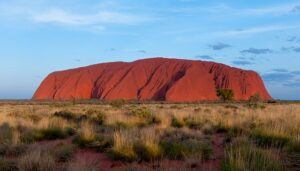Introduction
Pop marketing, also known as pop-up marketing, is a strategy used by businesses to create temporary retail spaces or events to engage with customers and generate buzz around their brand. These pop-up experiences are designed to be unique, immersive, and time-limited, creating a sense of urgency and exclusivity for consumers. In this article, we will dive deeper into the concept of pop marketing, exploring its benefits, strategies, and examples of successful pop-up campaigns.
Benefits of Pop Marketing
Creating Brand Awareness: One of the primary benefits of pop marketing is its ability to create brand awareness. By setting up a temporary physical presence in a high-traffic area, businesses can attract the attention of potential customers who may not have been aware of their brand before. The unique and eye-catching nature of pop-up experiences often leads to increased social media mentions and word-of-mouth marketing, further amplifying brand exposure.
Generating Excitement and Engagement: Pop-up events or retail spaces are designed to create a sense of excitement and exclusivity. By offering limited-time products, exclusive discounts, or interactive experiences, businesses can encourage customers to engage with their brand on a deeper level. This heightened engagement can lead to increased customer loyalty and a stronger connection between the brand and its target audience.
Testing New Markets or Products: Pop marketing provides businesses with an opportunity to test new markets or products without making a long-term commitment. By setting up a pop-up shop in a new location or launching a limited-edition product, companies can gauge customer interest and gather valuable feedback before making larger investments. This allows for more informed decision-making and reduces the risk associated with introducing new offerings.
Strategies for Successful Pop Marketing
Location Selection: Choosing the right location is crucial for the success of a pop-up campaign. It is essential to identify areas with high foot traffic that align with the target audience. For example, a fashion brand may opt for a trendy shopping district, while a food brand may choose a popular food market or festival. Conducting thorough research and understanding the target market’s preferences and behaviors will help in selecting the ideal location.
Creating an Immersive Experience: The key to a successful pop-up campaign is creating an immersive experience that resonates with customers. This can be achieved through unique and visually appealing store designs, interactive elements, and engaging activities. By providing an experience that goes beyond traditional retail, businesses can leave a lasting impression on customers and increase the likelihood of brand recall.
Utilizing Social Media and Influencers: Leveraging social media platforms and collaborating with influencers can significantly enhance the reach and impact of a pop marketing campaign. By creating buzz before, during, and after the pop-up event, businesses can generate excitement and attract a larger audience. Encouraging customers to share their experiences on social media and partnering with influencers who align with the brand’s values can amplify the campaign’s message and increase brand visibility.
Examples of Successful Pop Marketing Campaigns
1. Nike’s “The Ten” Collaboration: Nike partnered with designer Virgil Abloh to create a limited-edition collection called “The Ten.” To launch the collection, Nike set up pop-up stores in major cities worldwide. The stores featured unique designs, interactive displays, and exclusive product offerings. This campaign generated significant buzz, resulting in long lines of eager customers and widespread social media coverage.
2. Glossier’s Showroom Experiences: Beauty brand Glossier is known for its immersive showroom experiences. These pop-up locations allow customers to try out products, receive personalized recommendations, and interact with the brand’s community. By creating a welcoming and Instagrammable space, Glossier has successfully built a loyal customer base and generated a strong online presence.
Conclusion
Pop marketing is an effective strategy for businesses to create brand awareness, generate excitement, and test new markets or products. By carefully selecting locations, creating immersive experiences, and leveraging social media, companies can maximize the impact of their pop-up campaigns. Successful examples like Nike’s “The Ten” and Glossier’s showroom experiences demonstrate the power of pop marketing in engaging customers and building a strong brand presence.
References
– nike.com
– glossier.com






